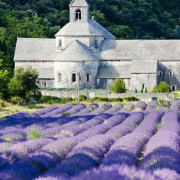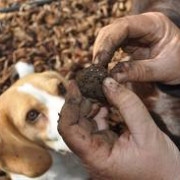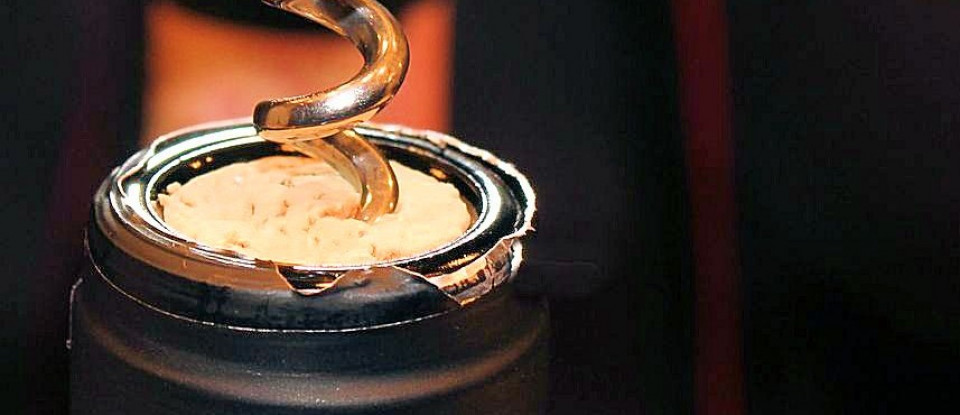
… That is exactly what fellow Sabletain and “Terroirist” Olivier Hickman does.

Read carefully …. because Olivier has spent many years making himself familiar with the terrain, learning the patterns of work, analyzing the components of each fermenting vat, and critically evaluating the results of many, many ….. acres of vineyards … and Wine Harvests!
 Olivier guides a tasting at Domaine la Fourmone
Olivier guides a tasting at Domaine la Fourmone
Although not all wine experts agree about the exact definition of the somewhat mysterious concept of the “Terroir,” it is of supreme importance in the French wine industry, (and is becoming increasingly important in many other wine growing areas). The basic element of the concept: a belief that the land on which the grapes are grown, imparts a unique quality which is specific to that particular area – be it a region, a vineyard or even a specific area within the same vineyard. It also includes the micro-climate and the surrounding vegetation and airborne natural yeasts. Coupled with the Appellation Controlee system, there’s a lot to learn about.
 Sablet is surrounded by vineyards
Sablet is surrounded by vineyards
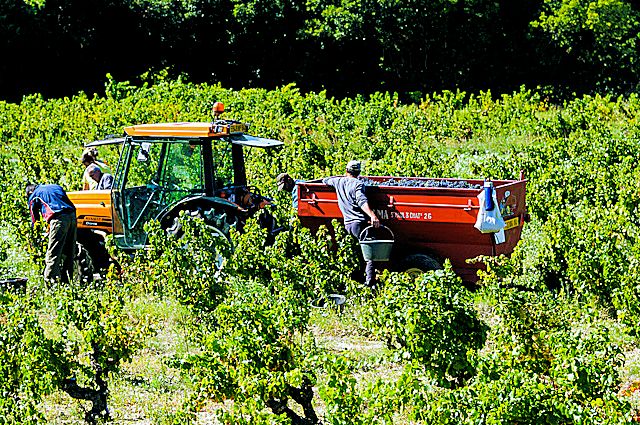 The Vendange in the vineyards around Gigondas – thanks to Dave Condeff for the picture
The Vendange in the vineyards around Gigondas – thanks to Dave Condeff for the picture
Olivier points out that, “The winemaker is king in the New World wine industry (Australia, Americas, etc). Styles of New World wines are driven, predominantly by wine making skills in the cellar.
In France, the emphasis is to “grow” a wine where the wine style is a product of the growers’ unique terroir and their grape-cultivation skills. The winemaker behaves more like a midwife: they are not the mother of the wine, there merely bring forth what was born in the vineyard.”
 Out in the vineyards, a group of guests experiences the terroir
Out in the vineyards, a group of guests experiences the terroir
From enthusiastic amateur to the connoisseur, well versed in Southern Cote du Rhone wines, Olivier – the Proprietor of Wine Uncovered in Sablet, offers customized wine tours. His aim is to help his tour guests come away, having enjoyed the tour, and learned in as much depth as they would like to, of all that goes into the making of these fine wines, and the “Appellation Controlee” system. “Enjoyable, stress-free and informative tours” is the motto at Wine Uncovered.

Olivier’s tours visit selected Wineries. Guests can choose between a half day tour of two wineries, a three quarter day tour of three wineries or a whole day covering four wineries, touring the cellars and taking outings into the vineyards, with a discussion of the philosophy of those wineries, the growing areas and methods, the types of grapes and their wine making techniques. Tastings are guided by your host and allow the opportunity to ask lots of questions and gain a much broader understanding of one of France’s most versatile wine regions.

Olivier, a graduate of Cambridge University, began his career as a Financial Controller. After this he opened a Wine Importing business in London, and then he began wine making in the Languedoc. He and his wife and two children moved to Sablet in 2005, and began Wine Uncovered Tours, which has received many wonderful reviews and will soon be featured on the PBS Series “The Winemakers”. Having grown up visiting his French grandmother in nearby Orange, he naturally felt quite at home amongst the vineyards of the southern Cote du Rhone.
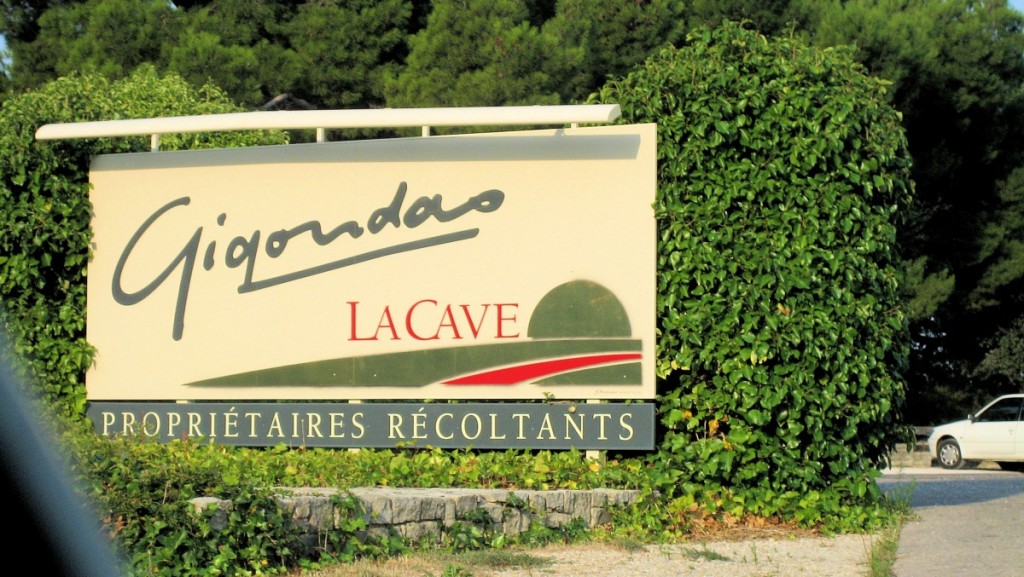
If a Provencal vacation in your future and you would like to know more about the tours that solve the mysteries of the terroir, you can check out all the details at: www.wine-uncovered.com
Maybe we’ll see you there!

The vineyards of Provence have taken shape over centuries, some still functioning that began as far back as Greek or Roman times. Producing wines is treated as both an art and a science. A great deal of respect is shown to the surroundings and traditions of growing grapes and making wine. The landscape of Provence is spectacular, but is subjected to a climate that can be very harsh, with its strong mistral winds, hot summer sun and from time to time, freezing. Here, in these vineyards, their ever mindful caretakers – Provence’s Vintners – faithfully care for their vines so that Provence remains one of the richest wine producing regions in France.
Spring in the vineyards … Waking up ….
As the days grow longer and the sun starts to warm the soil, the first sprouts of leaves and the beginnings of the little grape bunches push through from old, gnarled vines as well as newly planted ones. The countryside takes on a pale green hue and it seems as though there is daily change in the vineyards of Provence.

Tufts of green stand at the end of vines that have slept and regenerated through the winter. Provence can experience its heaviest rains during the Spring.

As the Spring rains come, the vines flourish and the vineyard workers start pruning and spraying to shape the vines so the grapes will get maximum nourishment, and protect against pests and diseases.

As the vines continue their growth, the Mistral winds which are more prevalent in the Winter and Spring months, play an important role in their health. They act to cool and dry the grapes, which makes them less susceptible to pests and diseases associated with humidity.
Summer in the Vineyards ….
By early summer, the landscape is a carpet of bright green… Provence has a truly Mediterranean climate with dry summers. This area is blessed with an exceptionally high number of sunshine hours, approximately 2,900 per year, exceeds both Los Angeles and Miami which have a little less than 2,100 sunshine hours per year. The warmth and sunshine help to develop a high sugar content, and if you have ever sampled a grape directly from the vine, you will know how sweet and juicy these grapes are.
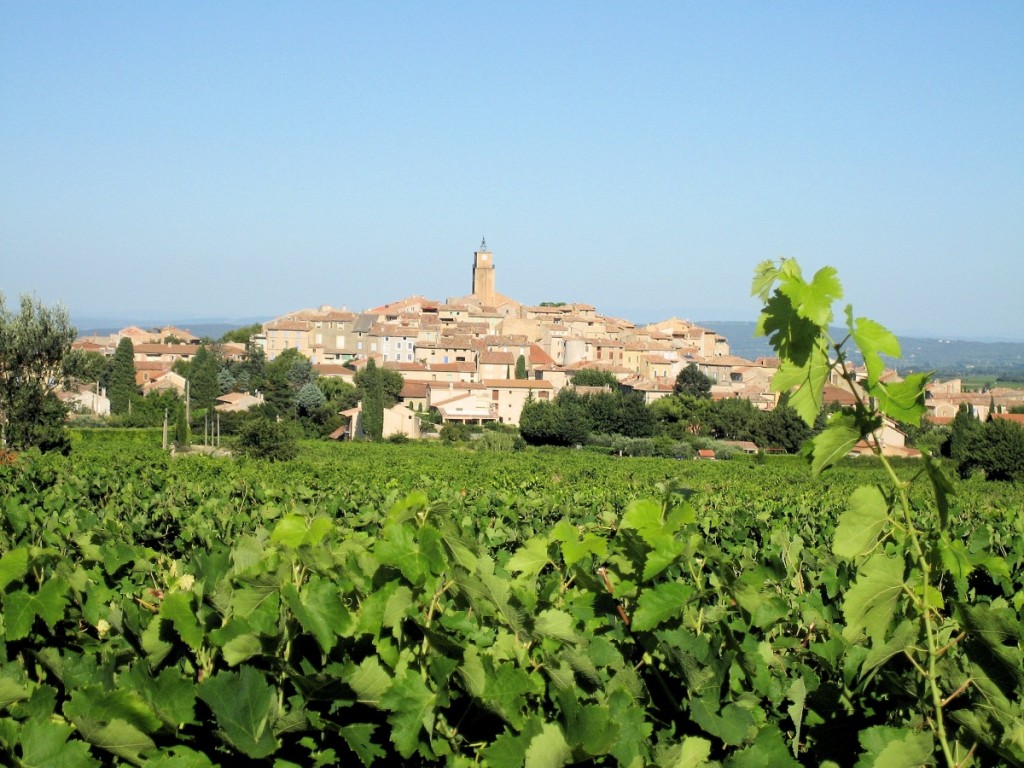
The work never stops …
Vintners constantly work in the fields manicuring the vines and making sure the grapes are developing a good sugar content. Vines are pruned to limit the leaf growth, and also the number of bunches of grapes, as it is believed that vines that bear too many grapes, will result in wines that lack flavor.

At this stage, the vineyards are so picturesque. They are a pleasure to take walks through or to find a quiet spot for a picnic.
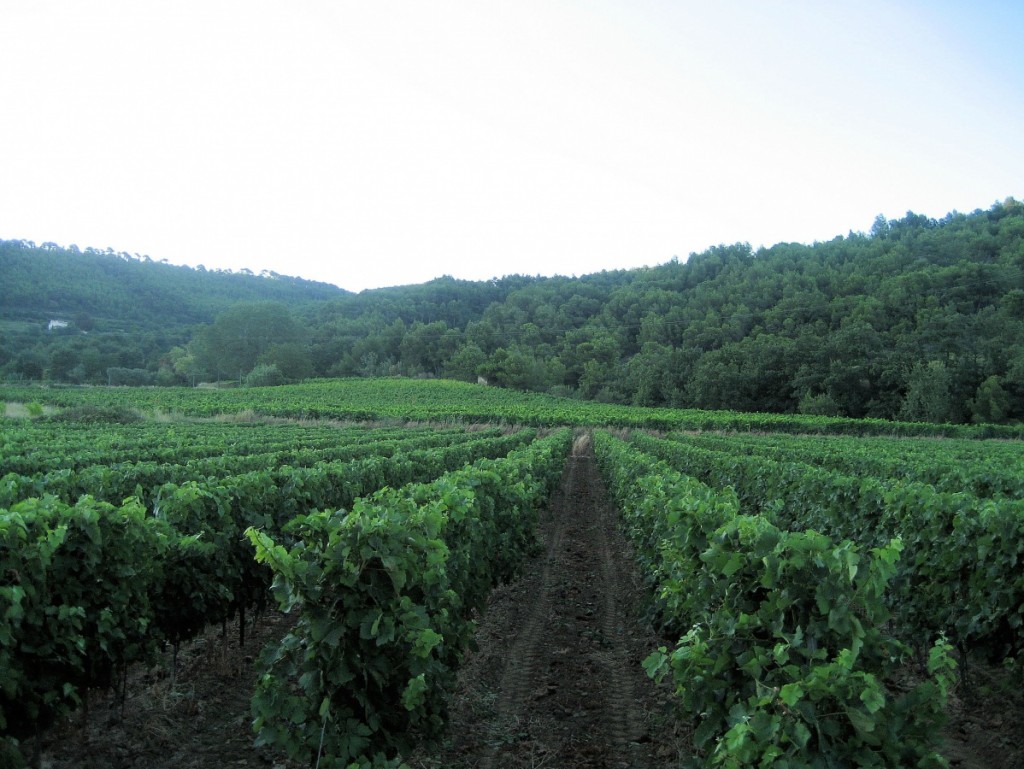
As the days stretch and the sun beats down, the grapes develop a strong flavor and character.

The Vendange (Wine Harvest)…
This is a season unto itself …. Beginning in late August, and stretching through to the end of September, the Vendange takes over the scene. The vineyards of Provence stretch from its western boundary of the Rhone Valley to the Cote d’Azur in the east. During the vendange, this 150 mile stretch is a hive of activity.

It’s all hands on board –
Towns and villages fill up with workers coming in to help harvest the grapes at their prime. Very early each morning, you will see trucks carrying loads of workers out to the vineyards.

Tractors pulling trailers heavy and piled high with deep purple grapes, shuttle between the vineyards and the Wineries where they will line up to unload and head straight back to the fields. It is not uncommon to see signs on roads that say, “Attention! Vendange en Cours” In other words, there will be lots of slow tractors and trailers on the road, and pay attention, as they might pull out onto a road in front of you from a vineyard at any time!
 A stream of purple grapes falls from the bin of the picker into the trailer, ready to be transported to the Winery
A stream of purple grapes falls from the bin of the picker into the trailer, ready to be transported to the Winery
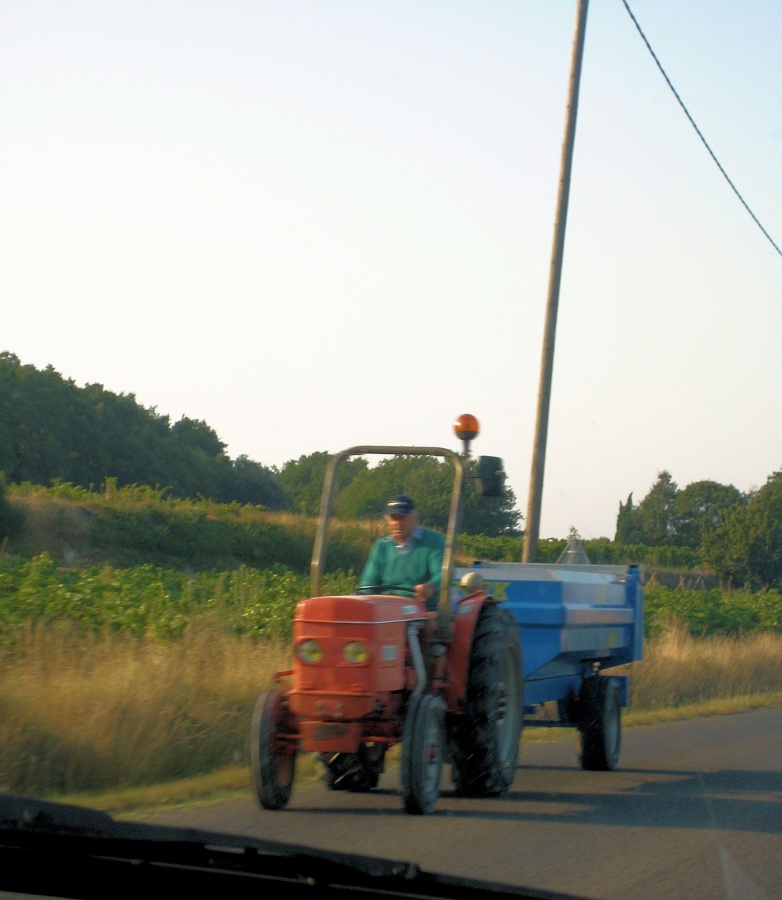
Attention! Vendange en Cours!
 A tractor and trailer has just arrived back to Sablet with its load, ready to have the sugar content measured and the grapes crushed.
A tractor and trailer has just arrived back to Sablet with its load, ready to have the sugar content measured and the grapes crushed.
 Unloading into the crushing bin
Unloading into the crushing bin

A fresh load of bright purple grapes sliding into the crusher.
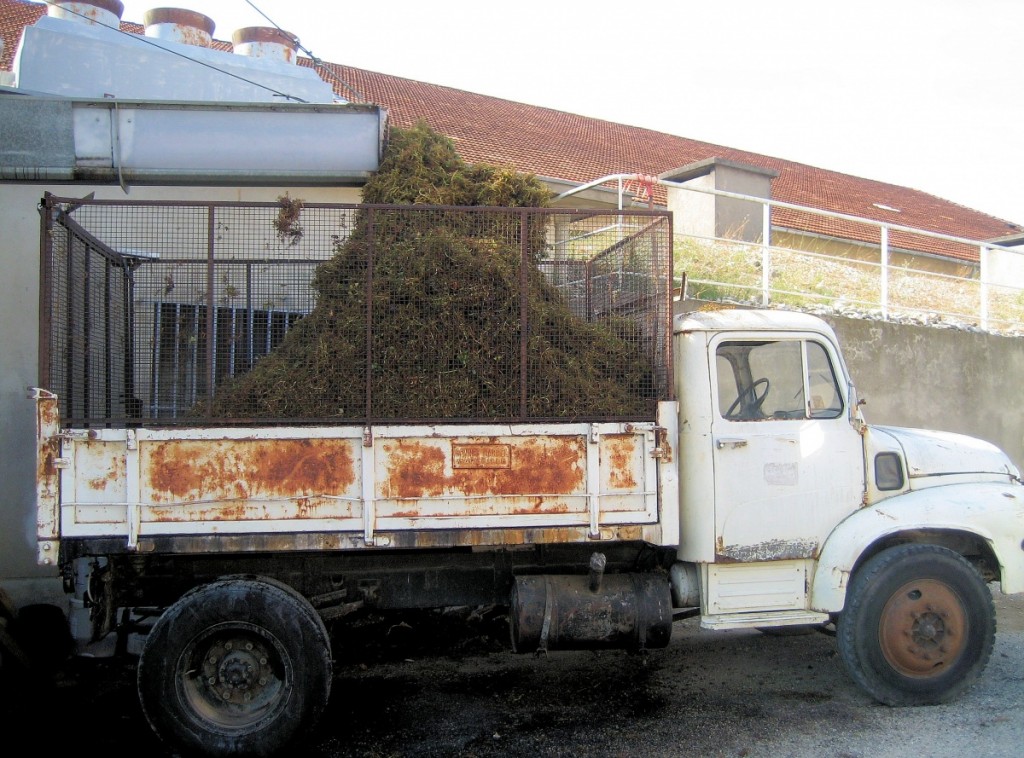 As the grapes are crushed and the juice extracted, the stems are separated out and taken away. The stems and seeds make a great base for compost.
As the grapes are crushed and the juice extracted, the stems are separated out and taken away. The stems and seeds make a great base for compost.
 At the end of each day, the tractors are parked and the trailers are washed clean of the sweet, sticky grape juice … ready to start again the next day.
At the end of each day, the tractors are parked and the trailers are washed clean of the sweet, sticky grape juice … ready to start again the next day.
As Autumn comes ….
The light takes on a golden hue, and so do the vineyards. The grapes have been picked, a new vintage is on its way. It’s time for the vines to let go of this year and start preparing for the next. As at first the evenings turn cool after golden, sunny days – then the mornings become hazier and cooler, the leaves begin to change color and soon the landscape which was cloaked in brilliant green, takes on waves of orange, gold, red and burgundy.
 Spectacular color fills the countryside
Spectacular color fills the countryside

Getting closer to Winter, and there is still work to do in the vineyards. The canes bearing the bunches that produced thousands and thousands of liters of wine now stand tall and bare. The pretty leaves have gone for another year and there is a distinct whiff of smoke in the air as the vines are pruned and the piled up clippings make very cozy looking bonfires. One vintner explained to us that this is a very important part of the process, as the burning of the vines adds back to the soil and becomes a part of the “terroir,” which is an essential element in the philosophy of wine making in France.

As the canes are trimmed and the vines go back to their essential base and branches, we can see (in the picture below), two or three plumes of smoke to the left of the village of Sablet. These plumes are from the bonfires made to burn the clippings.

Here, the vineyards at the foot of the hill on which the village of Seguret is situated, rest in the very late Autumn. Soon it will be time for opening this year’s new wines – “the Primeurs”.
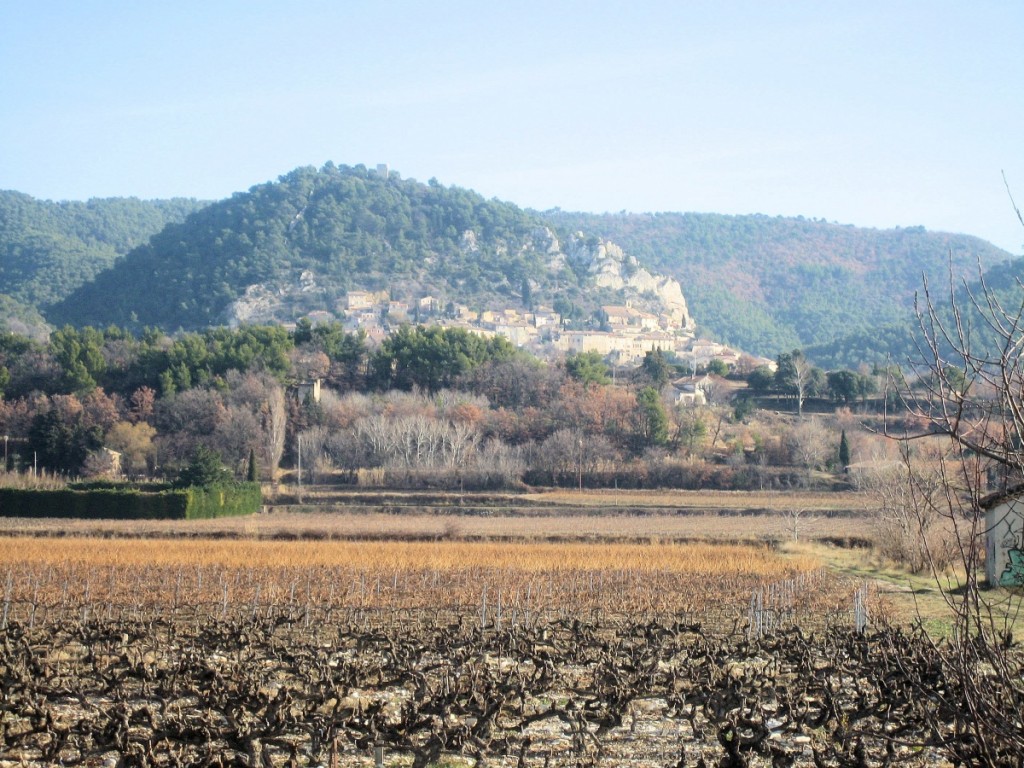
In Winter …
The air is super clear and the light has a sharp, crisp quality. The vines are now dormant and gathering nutrition for the coming year….

Sometimes, there is a light sprinkling of snow …

Then, you might wake up to a scene of dark vines amongst a light covering of powdery snow…
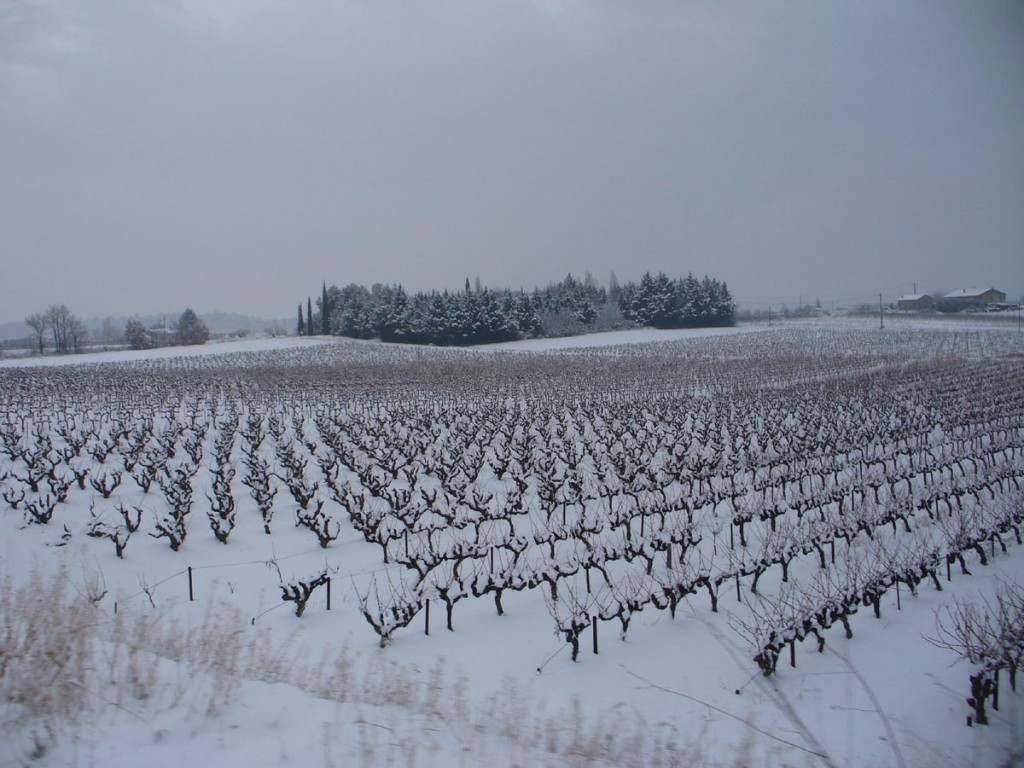
Then sometimes, it keeps on snowing and the vines get buried half way up their stems…

But … this time – it brought a whole new meaning to “Blanc de Blancs”!


